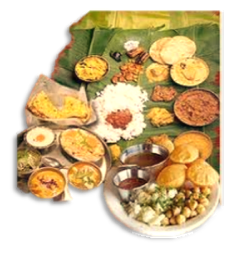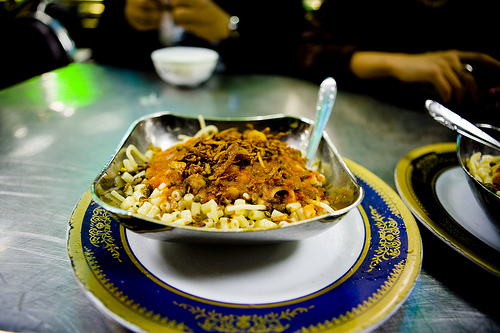Come Learn With MeOnline Reading |
FOODS OF THE EGYPTIANS Thousands of years ago, ancient Egyptians left evidence of their love for food. Well preserved wall paintings and carvings have been discovered on tombs and temples, depicting large feasts and a variety of foods. Many of these ancient foods are still eaten in Egyptian households today. Peas, beans, cucumbers, dates, figs and grapes were popular fruits and vegetables in ancient times. Wheat and barley, ancient staple crops, were used to make bread and beer. Fish and poultry were also popular. Dried fish was prepared by cleaning the fish, coating the pieces with salt, and placing them the sun to dry. Fasieekh (salted, dried fish) remained a popular meal in Egypt as of 2000.
The unique Egyptian cuisine has been influenced throughout history, particularly by its neighbors from the Middle East. Persians (modern-day Iraqis), Greeks, Romans (modern-day Italians), Arabs, and Ottomans (from modern-day Turkish) first influenced Egyptian cuisine thousands of years ago.
More recently, the foods of other Arabic people in the Middle East such as the Lebanese, Palestinians, Syrians, as well as some foods from Europe, have affected the Egyptian diet. However, Egyptian cuisine maintains its uniqueness. After thousands of years, rice and bread remain staple foods, and molokhiyya (a spinach-like vegetable) and ful mudammas (cooked, creamy fava beans), a national dish, are nearly as popular as long ago.
Egypt has a variety of national dishes. Ful (pronounced "fool," bean paste), tahini (sesame paste), koushari (lentils, macaroni, rice, and chickpeas), aish baladi (a pita-like bread), kofta (spicy, minced lamb), and kebab (grilled lamb pieces) are the most popular.
The most common bread is pita, usually made with whole wheat (or sometimes white) flour. Long, skinny French-style loaves of bread are also widely eaten throughout the country. Traditional Egyptian cheeses, as well as feta imported from neighboring Greece, are frequently served alongside bread at meals.
Ful (creamy bean paste made from fava beans), one of the country's several national dishes, is a typical breakfast meal. It is often served in a spicy sauce, topped with an egg. Lunch, normally served between 2 P.M. and 4 P.M., usually includes meat or fish, rice, bread, and seasonal vegetables. Salad ( mezza, or mezze if more than one is served), topped with typical Middle Eastern fare such as olives, cheese, and nuts, may also be eaten. Meat (usually lamb, chicken, fish, rabbit, or pigeon), vegetables, and bread make up a typical dinner in Egypt.
Tea and a dessert, such as baklava (honey pastry), basbousa (cream-filled cake), or konafa (cooked batter stuffed with nuts), are familiar after-dinner treats. Tea and coffee are widely consumed.
Egypt's numerous coffee and teahouses brew very strong coffee and tea (often mint tea), usually offering both full of sugar. Coffeehouses are typically filled with men who gather to play dominoes or backgammon. Coffee is served saada or "bitter" (no sugar) or ziyada or "very sweet." Egyptians also enjoy a drink called sahleb , made from wheat, milk, and chopped nuts.
Koushari (Lentils, Macaroni, Rice, and Chickpeas) Ingredients 1 cup lentils Sauce 1 cup canned tomato puree Procedure Prepare lentils: Place the lentils in a sieve and rinse thoroughly. Place them in a large saucepan with 3 cups of water and 1 teaspoon salt.
|
Copyright©H.Albadry 2012 |